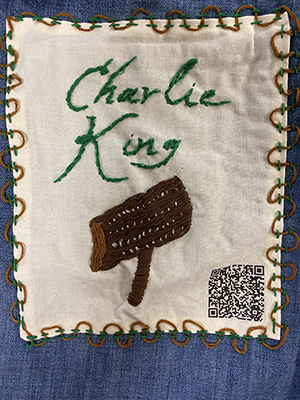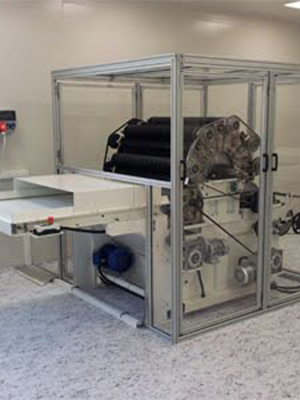Charlie King
"My old master trained his smartest [slaves] to do certain kinds of work. My mother was a good weaver, and wove all the cloth for her own family, and bossed the weaving of all the other weavers on the plantation.” – Charlie King
“Charlie and all of his ten brothers and sisters helped to card and spin the cotton for the looms. Sometimes they worked all night, Charlie often going to sleep while carding, when his mother would crack him on the head with the carder handle and wake him up. Each child had a night for carding and spinning, so they all would get a chance to sleep.” – Mary Crawford, interviewing Charlie King in 1936 for the Federal Writers’ Project.
 Doa Altay ’26
Doa Altay ’26
All raw materials need to be carded to align the direction of the fiber before it is spun. Cards are like square hair brushes made out of wood, with metal hooks instead of bristles. Carding was often given to younger children as a job because it required fewer fine motor skills. For millennia, two cards were pulled across each other by hand until Lewis Paul, son of a Hugenot refugee, invented a drum carding machine in 1748. A few years later another Englishman, Richard Arkwright, improved upon this by adding a comb and crank mechanism that enabled the machine to create a continuous sliver of cotton that could be spun into a finer yarn. In today’s industrial textile mills, drum carders have multiple cylinders and are fully automated, but the principle of the design is unchanged from the 18th century.
Sources
- Federal Writers' Project: Slave Narrative Project, Vol. 4, Georgia, Part 3, Kendricks-Styles. 1936
- How Cotton Fabric Is Made: Carding & Combing Cotton | Vision Linens
- The Evolution of Cotton Carding Machines - A Brief History and Overview
